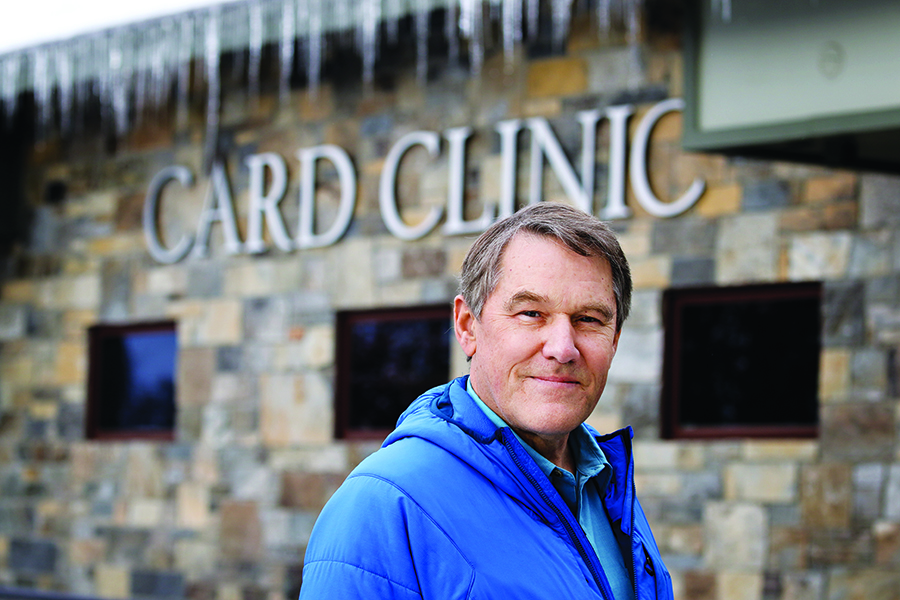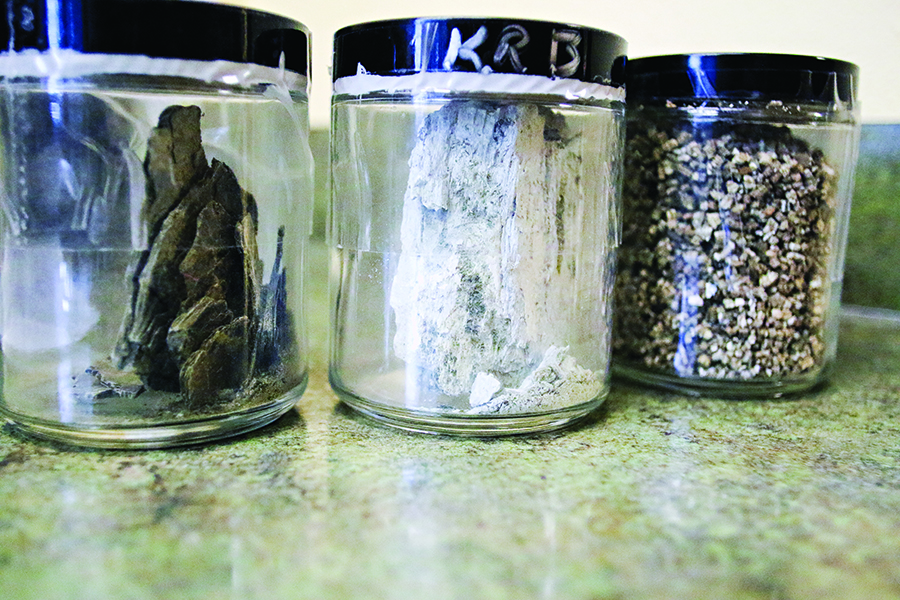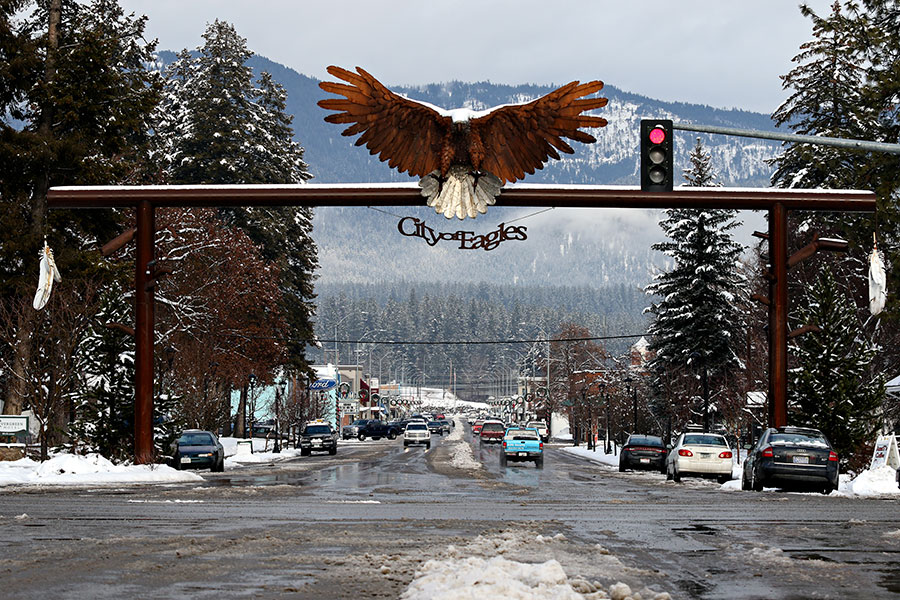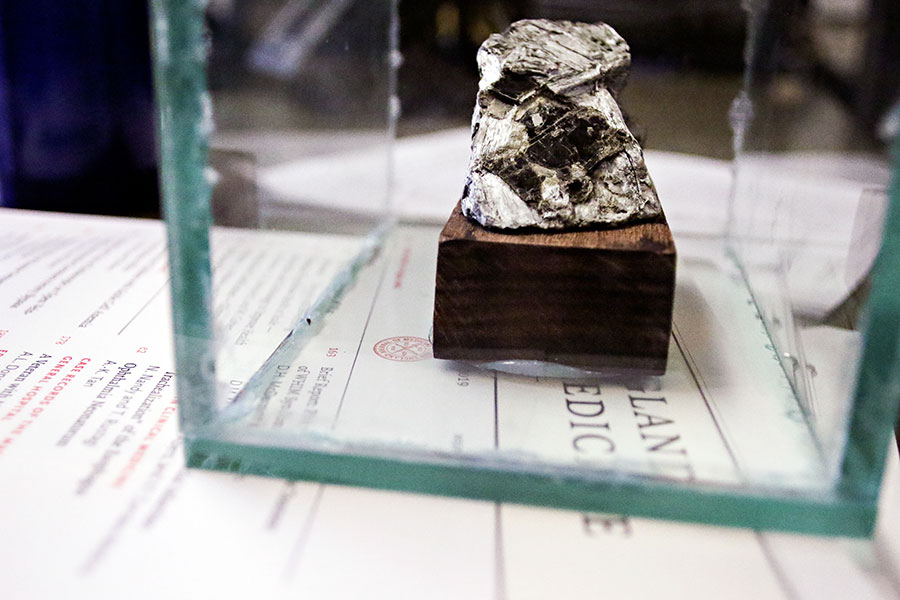The bleak world of asbestos science is tinged with subtle hues of gray and white, barely perceptible shadows that don’t strike the untrained eye as anything abnormal. But for those whose lives and careers are defined by the hundreds of people sick and dying in this tiny mountain community, the reality of the human tragedy that’s been unfolding here for decades is crystal clear.
Dr. Brad Black runs the nonprofit Center for Asbestos Related Disease (CARD) and perhaps more than anyone he sees a clear picture of Libby’s plague — but it’s a picture that muddies the further one strays from the former mining town, and away from its medical professionals who have been charting an alarming rate of asbestos-related lung disease here for nearly two decades.
A doctor in Libby since 1977, Black has been at the front lines of Libby’s asbestos fight, and despite all the fuss that’s been made over Libby in the last 20 years — despite the U.S. Environmental Protection Agency’s 2009 declaration of a public health emergency, the first such designation since the federal Superfund law passed in 1980; despite the more than $575 million spent in cleanup costs; and despite the well-documented asbestos contamination that’s sickened thousands and killed hundreds — Black is still waging an uphill battle.
“We keep on plugging because that’s all we can do,” Black said recently in a basement conference room at the CARD clinic. “When you have new patients coming through the door on a regular basis, your primary objective is to provide them with care. And that’s what we’re trying to do.”
Still, there’s more to Black’s work than traditional patient care, particularly as he and his colleagues pioneer new and innovative research in an effort to better understand Libby’s rarefied breed of toxic fibers. He and the CARD staff are also striving to educate the broader medical community about how they’re diagnosing asbestos-related health problems, and why they’re interpreting the faint hues of gray and white that appear on thousands of patients’ X-ray and CT images as disease when other pulmonologist colleagues don’t see it.

Lung disease caused from Libby Amphibole asbestos is difficult to detect because it develops subtly and forms a thin layer along the interior chest wall, where it may blend in with shadows, Black said. The scarring of the lungs is progressive in Libby patients exposed to asbestos fibers, so being able to see the scarring and gauge its growth early on through scans is critical for care, he said.
“We’ve tried very hard to get people to see what we’re seeing,” Black said. “Radiology is a gray world. You’re looking at gray shadows and everyone sees it differently. If you don’t know the disease, if you don’t know what you’re looking for, if you haven’t been tracking it here for 18 years, you won’t understand. You’ve got to know what you’re looking for.”
Unfortunately, what Black’s looking for is precisely what he’s finding.
New patients still arrive with metronomic regularity at the CARD clinic, a small medical clinic located off Mineral Avenue. Last year alone, 837 patients were screened and 209 were diagnosed, according to Tracy McNew, CARD’s administrative director.
McNew says that’s a figure that falls right in line with the clinic’s annual diagnostic rate of about 25 percent, which, when taking into account its nearly 20-year existence, portrays a bleak picture.
“Even after all this time, we’re still receiving new patients all the time,” she said.
Two decades ago, the scope of asbestos exposure in Libby came to light when news reports detailed a link between the deadly fibers unearthed at a vermiculite mine operated by W.R. Grace and Co. between 1963 and 1990 and the hundreds of people who were sick and dying because of exposure to asbestos-laden dust.

Two of the diseases most commonly associated with asbestos — asbestosis and mesothelioma — have latency periods of up to 40 years. That means people who were exposed to the asbestos dust could continue to develop illnesses for generations to come.
“Conservative estimates put us out until 2030, so it won’t go away for a while,” Black said. “Again, those are conservative estimates. It’s really hard to predict how many sick people we’re going to see, but it’s going to be a lot.”
Still, even as the volume of patients at the CARD clinic continues to swell, there’s a relative dearth of science. That’s because despite the millions spent by the federal government, no real investment has been made in scientific studies that would help answer some basic questions, such as: Does an effective treatment exist? Are there markers, like blood proteins, to help identify asbestos-related disease in patients before the air-constricting symptoms arrive? To what degree do genetics play a role in determining who gets sick? Do autoimmune diseases like rheumatoid arthritis and lupus serve as a precursor to asbestos-related disease and lung cancer? And why does Libby’s particular brand of asbestos, a toxic cocktail of several naturally occurring mineral fibers, cause such devastating disease to people with short-term exposure?
“There’s a real misunderstanding that there has to be a long-term occupational exposure,” Black said. “Even low levels can lead to very serious lung disease. We have people in our population who had very brief exposures and 10 years later they have the disease. The level that it takes to cause significant disease is really hard to believe. But that’s Libby’s pattern.”

Libby’s pattern is unlike that seen in most commercial asbestos, which belongs to a family called chrysotile asbestos, tiny fibers that, when inhaled, spiral into lung tissue like corkscrews. But Libby’s asbestos hails from the amphibole family, dart-shaped fibers that, when inhaled, lodge in the outer lining of the lung, or the pleura, a thin, elastic sac that, when healthy, expands and contracts in time with a person’s breathing.
But when the pleura is riddled with rigid, dart-shaped asbestos fibers, it begins to scar over, rendering the soft, pink tissue that was once thin as plastic wrap into something that’s thick as an orange peel.
Disease that’s the result of Libby’s asbestos can also be tricky to diagnose because it remains latent for years, then progresses at rates that have stunned medical professionals. Black and his colleagues might read abnormalities on a patient’s X-ray or CT images years before the patient ever exhibits symptoms.
Many patients at the CARD clinic request screenings simply because they’ve lived in Libby and may have been inadvertently exposed to the dust.
Because of a provision former U.S. Sen. Max Baucus, D-Montana, inserted into the Obama administration’s health care reform bill, the Affordable Care Act, victims of asbestos-related disease in Libby are eligible for a range of federal health care benefits, including services not normally covered by Medicare. The provision provides funding for screenings as well as Medicare coverage for all Libby residents with asbestos-related disease.
Under a special Medicare pilot program, the government also pays for services not included under Medicare, such as home care, medical equipment, counseling, help with travel, and medications not covered by Medicare prescription plans.
It’s a boon to current and former Libby residents unsure whether they’ve been exposed.
Studies by the EPA explain how the old vermiculite mine on Zonolite Mountain dispersed about 5,000 pounds of amphibole asbestos fibers over Libby every day the mill operated. It was sprinkled on the local ball field, used on the high school track, piled in heaps around the community, trucked away by train, and used as insulation in millions of homes across the country.
“In Libby, there are all kinds of pathways to exposure. It’s not just miners. People played in piles of the stuff when they were kids,” Black said. “A lot of the time we’ll screen hunters who grew up here and suddenly notice they can’t hike uphill any more without stopping every 15 feet to catch their breath.”
The findings in Libby could have larger implications for helping doctors across the country better diagnose people who were exposed to the amphibole fibers and moved away or were exposed to the fibers through one of the many products made with asbestos from the Northwest Montana mine.
Doctors might not recognize the more progressive form of lung disease caused by amphibole fibers, instead believing patients were exposed to chrysotile fibers, which make up 95 percent of asbestos use, Black said.
Still, Black is sympathetic to his colleagues who don’t see what he sees on patients’ scans.
“It’s been a challenge since we started,” he said. “Prior to 2000, we didn’t know anything. It was all a new experience for me because what we were seeing was so different than what we were trained to look for. We didn’t know what we were looking for.”
“This isn’t your grandfather’s asbestos disease,” he added.
In 2017, Black and his colleagues published a groundbreaking study that validated their interpretation of abnormalities they detected in imagery and scans that other radiologists dismissed.
The case involved a 74-year-old former Libby resident who worked as a millwright at the vermiculite mine from 1969 until its closure in 1990. He moved out of the area in 1991, and had no other known exposure to asbestos fibers. In 2011, he developed increasing chest pain, and in 2013 lung cancer screening detected a new, solid nodule that continued to grow on follow-up scans.
When the patient was referred for a lobectomy, a procedure that involves removing a section of the lung, analysis of the tissue revealed physical proof of what Black and his colleagues had detected on the patient’s scans — it was riddled with asbestos fibers, specifically, 5.5 million fibers per gram of wet lung lining.
“Most people would never have interpreted this patient’s scans as positive,” Black said. “And here we had physical proof, not just a radiologist’s interpretation. It was an ideal case because it showed exactly what we have been seeing — a high fiber burden that would not have been recognized as abnormal by most radiologists. Here, we were able to show it and compare it to the finer features of the scan.”
It was the first case in which lung tissue from a Libby miner was evaluated for fiber analysis.

“We know what we’re looking for but to train other people to see it over time is a challenge,” he said.
Even as Black and his colleagues, like Dr. Albert Miller, who specializes in pulmonary medicine and performs work at the Mount Sinai Medical Center in New York, seek to mount more scientific evidence to better understand Libby’s asbestos disease, and better imagery to diagnose it, thousands of lawsuits plod on through the legal channels.
Although W.R. Grace is no longer a defendant in legal actions, other defendants remain embroiled in lawsuits: International Paper, which owns the firm that operated a lumber mill in Libby; Grace’s insurance carrier, Maryland Casualty; Burlington Northern Santa Fe, which trucked the asbestos-laced ore to communities across the country; and the state of Montana, which knew about the mine contaminants for decades.
Black says the paper warfare waged in the lawsuits is time-consuming, and something he’d “rather do without.”
The Montana Supreme Court recently appointed six additional Asbestos Claim Court judges to handle the thousands of claims pending against dozens of defendants, a bloated docket that until the high court’s decision last month fell on a single jurist’s desktop.
The Asbestos Claims Court was created in November 2017, with the Honorable Amy Eddy, 11th Judicial District in Kalispell, appointed as the judge for pretrial proceedings for the 545 plaintiffs identified at that time, all of them fighting for reparations stemming from asbestos exposure from a now-defunct vermiculite mine in Libby, owned and operated by W.R. Grace, which derailed the cases for years after the company filed for federal bankruptcy.
With the federal proceedings over, the clot of cases is coursing through a constricted legal artery, even as the docket continues to swell.
Eddy said an additional six judges is barely scratching the surface of what’s needed to efficiently handle the volume, and they’re performing the work without compensation, on a voluntary basis.
“A total of seven judges just isn’t enough with so many hundreds of complex cases based primarily in Northwest Montana,” she said.
Now, similar lawsuits are being filed against Johnson & Johnson following reports that some of the company’s talc used in its baby products contained asbestos fibers, including tremolite fibers that have been the culprit in Libby.
So if the fundamental science still has yet to be performed in Libby, ground-zero in the nation for asbestos-related disease, what are the implications for new discoveries of asbestos exposure in other corners of industry, which will spawn thousands more lawsuits?
“We could have more science and it would still be a battle. It’s the nature of the game,” Black said. “But more science is exactly what we need.”
With a limited budget, and in some cases no budget whatsoever to perform the necessary studies, Black says the scientific community is missing out on a monumental opportunity.
“We have the perfect population to perform these studies on, but to find the money? Nobody has it,” Black said. “In the world of asbestos, it’s tough to get a fair shake.”
“To lose this opportunity with the Libby population is one of the biggest mistakes we can make,” he added.
